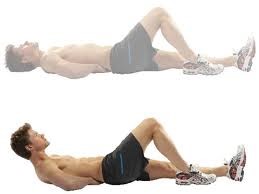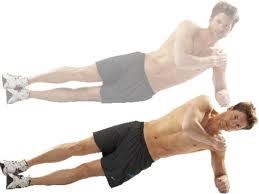Are you someone plagued by low back pain?
Have you been told that stretching and strengthening the low back muscles will help ease your pain? These are two common misconceptions, it is thought that stretching the back muscles and increasing the range of motion will reduce back problems. However, scientific evidence shows that an increase in low back range of motion often leads to a greater risk of injury. Also, strength has little association with reducing low back pain. Most often times people actually injure their low backs while performing exercises to increase strength. So if both stretching and strengthening can lead to injury and therefore not decrease low back pain what should someone do? The answer is to increase endurance!
Stuart McGill, a professor of spinal biomechanics at the University of Waterloo, is one of the world’s leading experts on spinal research. McGill has identified three exercises, which increase low back muscle endurance, increase core stability and have a low probability of causing injury. The three exercises that McGill suggests are referred to as “The Big 3” and are comprised of: The Curl Up, The Side Bridge and The Bird Dog.
The Curl Up
The curl up is different from the standard abdominal crunch in that there should be virtually no movement through the low back. While lying on your back place your hands in the small of your back to act as a guide of low back movement if flattening of the low back is felt then too much movement is occurring. Bend only one leg and place your foot on the floor, alternate which leg is bent half way through the repetitions. Lift only the head and shoulders off the ground hold for a moment and then lower back down. Perform 12 repetitions.

The Side Bridge
Begin by lying on your right side supported by your right elbow, hip and knee. Using your left hand press up through the hips until you are supported by your right elbow and knee. The top hand can rest on the hip, or the down shoulder for extra support. Progression includes moving to being supported by your elbow and feet rather than the knees. Holding the position for as long as possible is the best, however once your form starts to break or you become shaky lower back to the ground. Perform this exercise on both sides.

The Bird Dog
Begin on both hands and both knees. Lift one leg no higher than parallel with the torso and return the leg to the starting position. Follow this by lifting the opposite arm no higher than parallel with the torso and return the arm back to the starting position. To progress both the leg and the opposite arm are lifted at the same time to parallel with the level of the torso. When the leg, arm or both the leg and opposite arm are lifted hold for no more than 6-7 seconds. This exercise is performed by alternating sides. Further progression involves drawing a square with the leg and opposite arm when they are lifted. It is very important to ensure not to lift the limbs higher than the torso and to ensure no rotation is occurring through the torso when the limbs are lifted. A water bottle can be placed on the low back to help indicate if movement is occurring. Perform 8-10 repetitions on each side.
Before performing these exercises it is important to brace the core. In order to do this rather than drawing the navel toward the spine tighten the entire core as if you were bracing for a punch to the stomach. Placing your fingers one inch below your hipbones and one inch toward the midline is a good way to perform a self-check. Once there you should be able to feel the muscles under your fingertips contract.
It should also be noted that these exercises have the most beneficial effect when performed daily and performed in conjunction with a cardiovascular component such as walking. Be patient and stick to the program, pain reduction and increases in endurance may not be seen right away.

